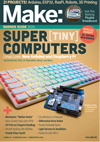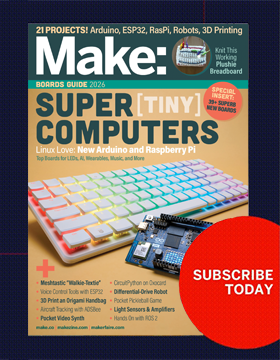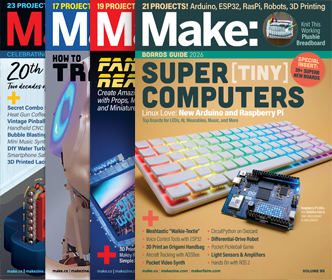
Pachinko Machine part 2
WHAT WILL YOU MAKE?
A vertical pinball game to play with family or friends!
WHAT WILL YOU LEARN?
You will learn to use woodworking techniques such as hammering, drilling, sawing, sanding and careful measurment to fabricate a mechanical game originating in Japan. You will also connect electronic components so you can track points and add buzzers and lights.
STEPS
STEP 1
STEP 2
STEP 3
STEP 4
STEP 5
STEP 6
STEP 7
STEP 8
STEP 9
STEP 10
STEP 11
STEP 12
STEP 13
STEP 14
WHAT'S HAPPENING HERE?
Arduino is a free software and hardware development company, as well as an international community that designs and manufactures hardware development boards to build digital devices and interactive devices that can detect and control real-world objects.
Materials:
- balsa wood
- wood scraps
- plastic canvas
- plexiglass
- eight small magnets
- 1.25" L x 1/4" diameter bolt
- 1/4" diameter nut
- two 1/4" diameter washers
- craft knife
- pencil
- ruler
- hack saw
- sandpaper
- low temp hot glue gun
- drill
- 1/4" and 5/8" drill bits
- wire strippers
- soldering iron and solder
- Arduino Uno
- 16 x 2 LCD display
- five IR breakbeam sensors
- 3 V piezo
- 5mm blinking LED
- switch or button
- 10 K potentiometer
- two 220 ohm resistors
- 5 V power supply
- half-sized breadboard
- electric tape, duct tape
- hookup wire
- Arduino sketch
- circuit diagram
See More Projects in these topics:
Games WoodworkingSee More Projects from these themes:
Construction SiteMaker Camp
Please Note
Your safety is your own responsibility, including proper use of equipment and safety gear, and determining whether you have adequate skill and experience. Power tools, electricity, and other resources used for these projects are dangerous, unless used properly and with adequate precautions, including safety gear and adult supervision. Some illustrative photos do not depict safety precautions or equipment, in order to show the project steps more clearly. Use of the instructions and suggestions found in Maker Camp is at your own risk. Make Community, LLC, disclaims all responsibility for any resulting damage, injury, or expense.
Maker Camp Project Standards
Based on NGSS (Next Generation Science Standards)
NGSS MS.Engineering Design
The Next Generation Science Standards (NGSS) are K–12 science content standards.- MS-ETS1-1. Define the criteria and constraints of a design problem with sufficient precision to ensure a successful solution, taking into account relevant scientific principles and potential impacts on people and the natural environment that may limit possible solutions.
- MS-ETS1-2. Evaluate competing design solutions using a systematic process to determine how well they meet the criteria and constraints of the problem.
- MS-ETS1-3. Analyze data from tests to determine similarities and differences among several design solutions to identify the best characteristics of each that can be combined into a new solution to better meet the criteria for success.
- MS-ETS1-4. Develop a model to generate data for iterative testing and modification of a proposed object, tool, or process such that an optimal design can be achieved.
NGSS HS.Engineering Design
The Next Generation Science Standards (NGSS) are K–12 science content standards.- HS-ETS1-1. Analyze a major global challenge to specify qualitative and quantitative criteria and constraints for solutions that account for societal needs and wants.
- HS-ETS1-2. Design a solution to a complex real-world problem by breaking it down into smaller, more manageable problems that can be solved through engineering.
- HS-ETS1-3. Evaluate a solution to a complex real-world problem based on prioritized criteria and trade-offs that account for a range of constraints, including cost, safety, reliability, and aesthetics as well as possible social, cultural, and environmental impacts.
- HS-ETS1-4. Use a computer simulation to model the impact of proposed solutions to a complex real-world problem with numerous criteria and constraints on interactions within and between systems relevant to the problem.
ALL DONE? SHARE IT!
Share pictures and videos of your cool build! Be sure to use #maketogether or #makercamp
POST YOUR PROJECTS


